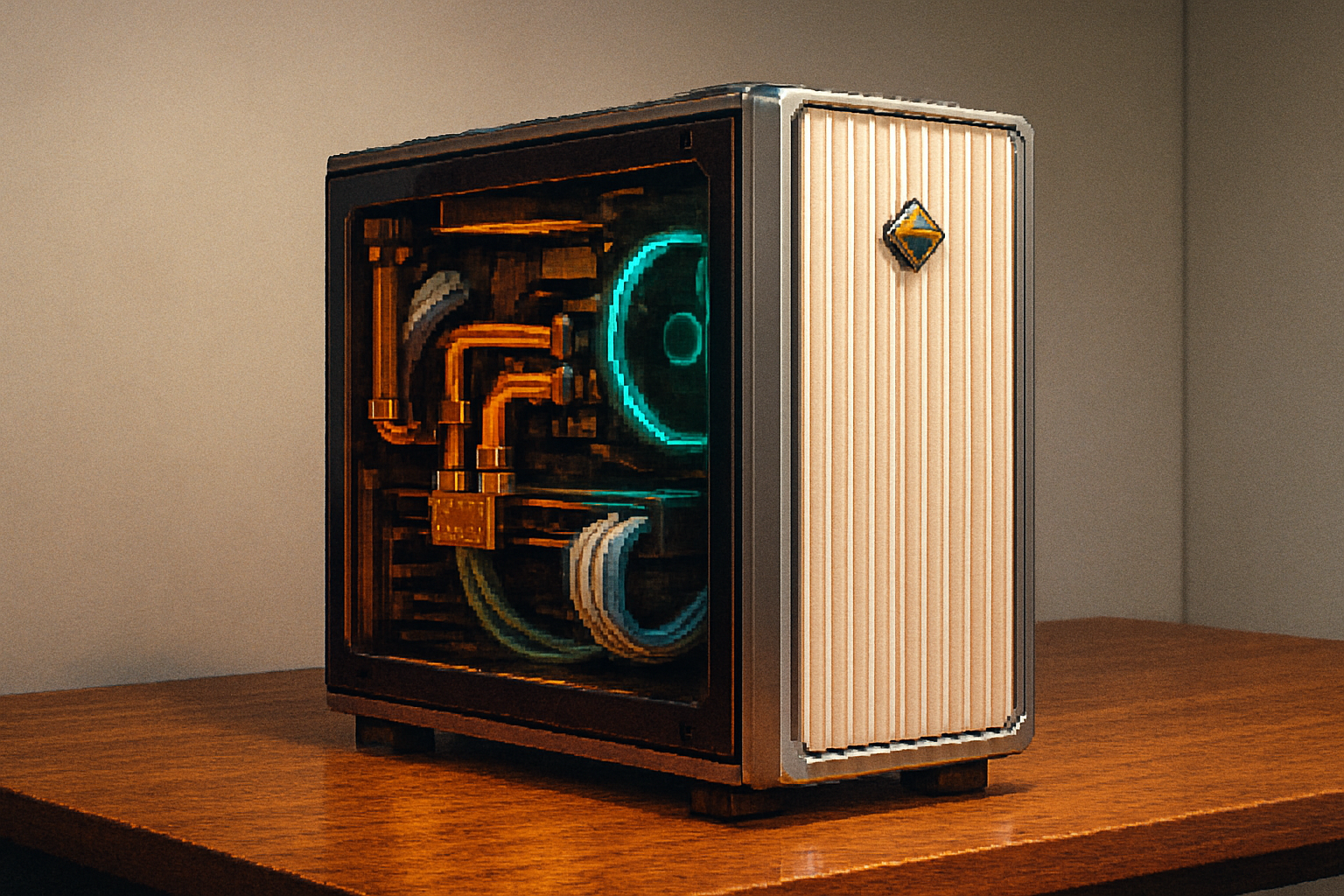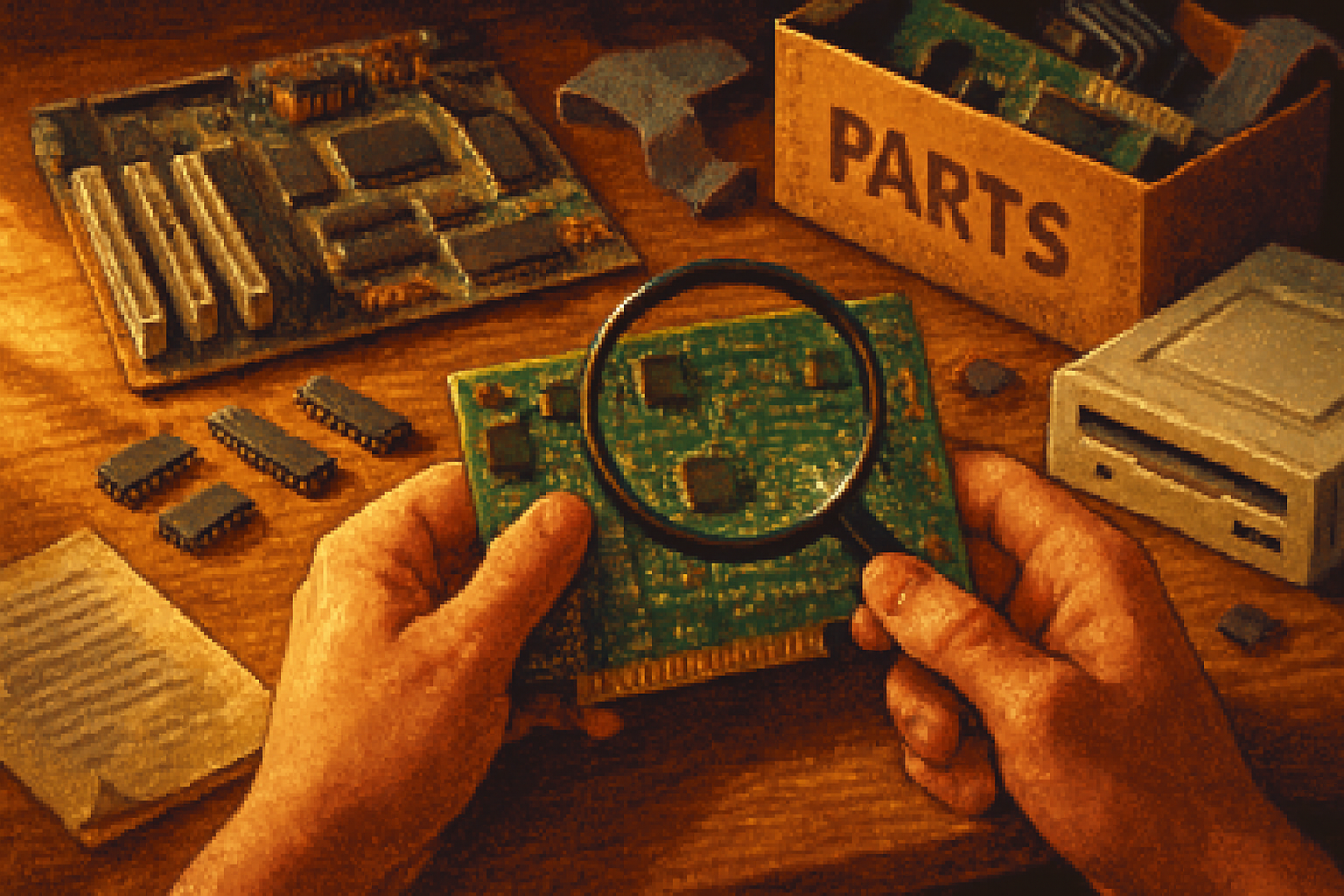· 7 min read
Environmental Impact: Is Building a Retro PC More Sustainable?
Weighing reuse against energy inefficiency, this article examines whether building or keeping a retro PC is greener than buying modern hardware. It covers lifecycle emissions, e-waste, hazardous components, repair vs replacement math, and practical steps to maximize sustainability for vintage computing.
Introduction
Interest in retro computing - restoring old machines, building rigs from vintage parts, or running classic operating systems - is booming. Beyond hobbyist nostalgia, many enthusiasts argue that reusing older hardware is a small but meaningful climate action: keep something working instead of buying new. But is a retro PC really more sustainable once you account for energy use, parts scavenging, hazardous components, and global recycling practices? This article breaks down the environmental trade‑offs and gives practical guidance for hobbyists and everyday users.
Why lifecycle thinking matters
To judge sustainability you have to look at the whole lifecycle: extraction of raw materials → manufacturing → transport → use (energy) → end‑of‑life (recycling or disposal). Electronics often have relatively large “embodied” impacts from mining and manufacturing, so extending a device’s life can avoid emissions from making a replacement. At the same time, older devices are usually less energy‑efficient during the use phase, and some vintage components (e.g., CRTs, certain capacitors or batteries) present larger hazards at disposal.
Key facts and context
- Global e‑waste is large and growing - the Global E‑waste Monitor reports tens of millions of tonnes of e‑waste per year and rising, with a recovery/recycling gap in many regions. See the Global E‑waste Monitor for figures and trends:
- Proper reuse and repair reduce demand for new production and keep hazardous materials out of inappropriate disposal streams. Guidance on electronics donation and recycling from national agencies is useful: https://www.epa.gov/recycle/electronics-donation-and-recycling.
- International rules and agreements (e.g., the Basel Convention) aim to limit hazardous transboundary movements of e‑waste: https://www.basel.int/.
Where a retro PC helps the environment
- Avoided embodied impacts
- If you already own hardware, keeping it running avoids the emissions and resource use tied to producing a new machine. Manufacturing can be the dominant portion of a device’s lifecycle emissions, especially for thin laptops and smartphones. For many electronics, extending service life by years reduces the need for replacements.
- Waste reduction and circularity
- Reuse keeps devices in circulation and reduces the volume of items entering salvage or landfill streams. Repaired and repurposed machines feed local circular economies and decrease extraction pressure for new parts.
- Low‑tech, low‑resource hobbyist practices
- Many retro projects rely on salvaged parts and local repair networks (repair cafés, maker spaces), which are inherently lower‑impact than buying boxed new devices shipped long distances.
Where a retro PC can be worse for the environment
- Energy inefficiency in use
- Older CPUs, power supplies, and mechanical storage are often far less energy‑efficient than modern equivalents. A machine that draws hundreds of watts for desktop tasks can consume a lot of electricity over months and years. If your local grid is carbon‑intensive, higher energy use quickly adds up.
- Hazardous components and disposal complexities
- Vintage hardware may contain hazardous materials (leaded solder in older boards, CRT glass with phosphors and heavy metals, certain capacitors, and NiCd batteries) that require proper recycling. Improper disposal can harm people and ecosystems.
- Repair parts and shipping footprint
- Scarce replacement parts may need to be sourced from far away, increasing transport emissions. Some vintage projects rely on modern add‑ons (like replacement power supplies or SSDs) whose embodied impacts should be counted.
How to evaluate whether keeping or building a retro PC is the greener choice
Use this decision framework:
Are you reusing hardware you already own? If yes, reuse is almost always more sustainable than replacing it immediately. The embodied impacts are already “sunk.” Keep it running, repair, upgrade select components (e.g., swap HDD for SSD) and you reduce lifetime emissions.
If you would otherwise buy a new device, compare the trade‑offs - embodied carbon of a new machine vs. additional annual energy burned by an older machine. A simple payback check is:
- Embodied emissions of a new replacement (kg CO2e) divided by annual operational savings (kg CO2e/year) = years to pay back embodied emissions. If that payback is shorter than the expected remaining life of the replacement, buying new could reduce lifetime emissions. Treat any numerical inputs as illustrative unless you source manufacturer LCAs or peer‑reviewed data.
- Consider function and workload. For light tasks - word processing, retro gaming, coding - a retro PC may be perfectly well suited and more sustainable than buying new. For 24/7 or heavy computational tasks where energy efficiency matters, a modern energy‑efficient machine might be better.
Illustrative example (not universal)
Imagine an older desktop that uses 200 W under typical load vs. a modern small desktop using 50 W - a 150 W saving. If you run the machine 4 hours a day on average, that’s ~0.6 kWh/day or ~220 kWh/year saved. Multiply by your grid’s carbon intensity to get annual CO2 savings. Compare that to a reasonable estimate of the embodied carbon of a new small desktop. This calculation shows “payback time” and helps you decide - but plug in local numbers for accuracy.
Practical tips to make retro builds more sustainable
- Prioritize reuse over buying - scavenge local parts and trade within your community before buying new.
- Upgrade selectively - swap mechanical HDDs for low‑power SSDs (SSDs often use less power and reduce noise and failure), replace inefficient power supplies with high‑efficiency units if available, and add RAM to reduce swapping.
- Use modern power management - enable sleep, reduce idle power, and use lightweight OSes tuned for efficiency to lower run‑time consumption.
- Avoid hazardous salvage - don’t attempt to repair or recycle CRT monitors or handle batteries and capacitors without safety training. Send these to authorized recyclers. National recycling guidance helps:
- Track real electricity use with a kill‑a‑watt meter - data beats guesswork.
- Embrace the circular economy - sell, donate, or trade functional vintage hardware locally. That reduces shipping and prevents bad disposal.
- Support right‑to‑repair and community repair initiatives to make long lifetimes practical and safe. The EU and other jurisdictions are advancing repairability measures: https://ec.europa.eu/environment/circular-economy/.
Social and policy dimensions
A lot of the environmental benefit of retro computing depends on systems: availability of proper recycling, curbing illegal e‑waste exports, access to spare parts, and incentives for repair. Product design choices (modular design, standardized parts, documented repairs) and right‑to‑repair laws materially affect whether reuse is realistic and low‑impact.
Final verdict - it depends
- If you already own the machine - in almost all cases, keeping it running and repairing it is more sustainable than buying new immediately. Extending service life avoids manufacturing emissions and reduces waste.
- If you’re buying specifically to build a retro rig - used parts sourced locally and minimalist modern upgrades can be sustainable, but buying many new retro components can negate those benefits.
- If your workload requires long daily runtime or heavy compute - run the numbers. Modern energy‑efficient hardware may pay back its embodied emissions in saved electricity and be the greener long‑term choice.
Takeaway checklist
- Reuse first - if it works, fix it. Reuse beats new production.
- Measure - use a power meter and simple LCA arithmetic to compare options.
- Upgrade wisely - low‑power SSDs and efficient PSUs can extend the practical life of older machines.
- Dispose responsibly - hazardous vintage parts need certified recyclers.
- Build community - share, swap, and support repair networks to amplify environmental benefits.
Further reading and resources
- Global E‑waste Monitor (overview and regional data): https://globalewaste.org/
- U.S. EPA - Electronics donation, reuse, and recycling: https://www.epa.gov/recycle/electronics-donation-and-recycling
- Basel Convention - control of hazardous waste movements: https://www.basel.int/
- IEA - energy use and digital infrastructure (for context on data center and ICT trends): https://www.iea.org/reports/data-centres-and-data-transmission-networks
- European Commission - circular economy and product policy directions, including repairability: https://ec.europa.eu/environment/circular-economy/
Building and maintaining retro PCs can be a genuinely sustainable hobby when done thoughtfully: prioritize reuse, measure energy, avoid hazardous practices, and plug into local repair and recycle networks. With those guardrails, nostalgia and sustainability can go hand in hand.



